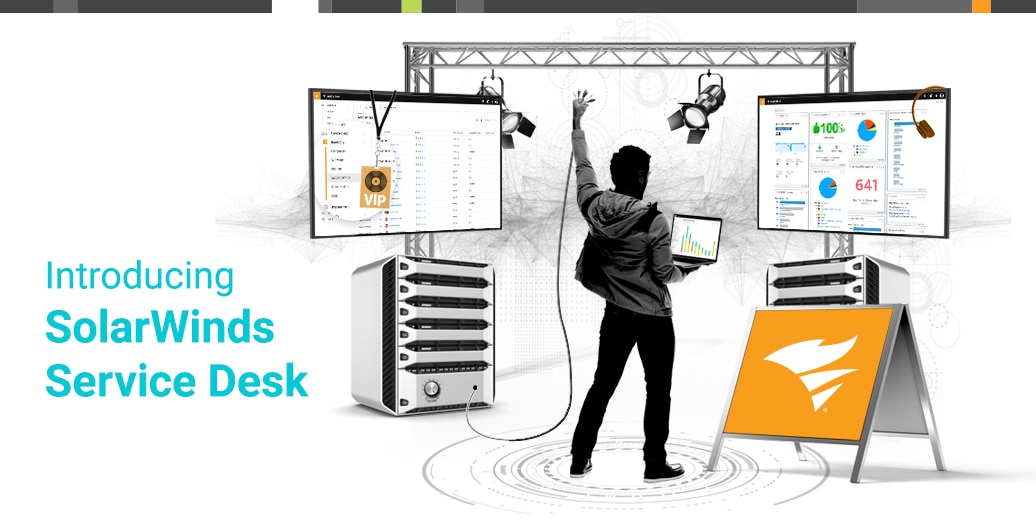For those who have been keeping up with our series on
IT Service Management (ITSM) beyond IT, welcome back! If you’re new to this conversation, it isn’t like a podcast where I’ll send you back to part one, but you may find it helpful to visit the previous recommendations for
other internal service providers.
Reflecting on 2020, we saw how powerful collaboration in the service desk could be in maintaining users’ productivity and achieving broader business goals. Organizations of varying sizes and differing industry segments faced unique challenges. Despite these differences, they shared a similar experience — uniting internally to keep their business afloat.
While each department has their own set of responsibilities and obstacles, your organization and your employees can benefit from internal service providers working together. The past year brought its fair share of hurdles, but it also created an opportunity for your departments to collaborate and strengthen the organizational culture under one
ITSM platform.
Let’s explore how Human Resources (HR) can become engrained in the service desk.
Making Coexistence a Reality
HR and IT are involved in processes that call on both departments to propel operations forward. Consider all that’s needed to transition a user to a new department, or the steps involved to seamlessly offboard an employee. These requests require the unique skills and security access of both HR and IT, which traditionally are siloed. It also forces previous departmental barriers to be eliminated. To ensure these critical services are delivered efficiently, the two departments must work together to find ways to streamline their communication and operations.
Leveraging a tool like the
service desk can help to achieve unity and heightened visibility between departments. As you identify opportunities to fuel collaboration between these service providers in your ITSM environment, it’s also important to consider how to configure the platform to maximize productivity and business success.
Knowing IT and HR are inherently different, you may be asking yourself how the two can cohabitate in one platform.
An Incident Isn’t an Incident
When preparing to expand your ITSM footprint across other departments, it’s critical to review their individual needs and service strategies. Answering a few tactical
questions around operational requirements can frame the scope of how to best include Human Resources within your current service management environment.
- What categories are needed to align with existing operations?
- Can roles be molded in accordance with access and security needs?
Addressing these considerations helps teams assess how they'll execute their cross-departmental ITSM expansion.
Establishing your classification structure is pivotal for service desk adoption, routing and accessibility, as well as for reporting. When it comes to HR’s involvement in the service desk, categories provide structure while helping differentiate their departments' cases from IT’s incidents. It isn’t just for syntax purposes; an incident holds a completely different meaning for HR!
Beyond baseline classification, much of HR’s work gives them access to extremely sensitive data. To adopt and have success in a shared service platform, it is paramount HR limit visibility and access to their queue. Due to the classified nature of the requests HR is responsible for, such as payroll inquiries or termination workflows, they need to ensure other users do not see this information. Rather than creating operational silos, the ability to craft custom roles with unique permissions helps protect users’ data and drives operational efficiencies.
Examining these foundational elements helps guide configuration, empowering HR around the workflows, requests, and knowledge content they can effectively implement within a shared service desk.
More Than Just Onboarding
Centralizing your service management platform can improve cross-departmental visibility and communication, while strengthening the relationship between employees and the service desk. But how is it best achieved? There isn’t a set formula for scaling your service desk footprint to encompass multiple departments, but it’s helpful to consider different approaches.
While a senior living community’s SolarWinds Service Desk journey began with a focus on IT, there was a growing need to support HR’s service management objectives. HR was receiving departmental requests, from benefits to recruiting, to multiple email addresses, making it challenging for the team to effectively see and respond to incoming inquiries. To better manage ongoing questions and improve their intake processes, HR opted to partner with IT and broaden their use of
SolarWinds Service Desk.
Leaning on IT’s experience, the HR team reviewed their classification structure, responsibilities, and service delivery objectives to map out an
optimal implementation. Taking these steps enabled HR to automate their department’s case intake, eliminating their reliance on email and improving their escalation procedures. Documenting these processes helped HR cultivate a viable knowledge base and service catalog, improving visibility and promoting opportunities for heightened departmental collaboration.
Bringing the Pieces Together
Cultivating a shared space for internal service providers can improve how departments work together, while strengthening the dynamic with their employees. Uniting the service management vision of multiple departments in one platform can elevate the service desk as a trusted resource to your organization.
As we kick off the New Year, we’ll be rounding out our “Beyond IT” series. In our final installment, we’ll peel back engaging other departments in one ITSM platform and how impactful this strategy can be in achieving
employee service management.






